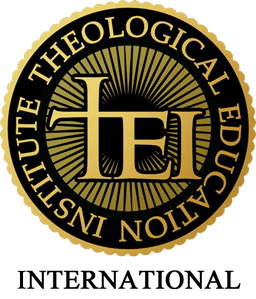Notes on the Sociology of Religion (7)
John C. Rankin
Durkheim, Emile, excerpt from Elementary Forms of Religious Life. In Durkheim on Religion, edited by W.S.F. Pickering (London and Boston, Routledge & Kegan Paul, 1975), pp. 102-166.
_____________________
- Up front summary: Primitive religion is the basis to generalize about all religion, religion is man-made for sociological purposes, and society de facto equals god.
- Background: a) 1858-1917, from eastern French province of Lorraine, “father of sociology”; b) From long rabbinic line, moved secular in developing theory that religious behavior and phenomena are intrinsically social in nature; c) influence of August Comte and Herbert Spencer; d) introduced social science into French school system; e) 1893 publication of The Division of Labour in Society; in face of backlash against secular rule following Franco-Prussian War and Dreyfus Affair; f) 1895 publication of Rules of the Sociological Method; 1897 publication of Suicide; g) 1898 founding of the journal L’Anne’e Sociologique; h) 1902 appointment to the Sorbonne; 1912 publication of The Elementary Forms of Religious Life; I) Era of wrestling through Darwinian evolution and the post-mortem social Darwinism that traced its identity accordingly.
- Central Concerns: a) explain primitive religion (among simplest of societies with no known prior sources) – 1. They all have sociological/relative truth because they have lasted… (“roots in the very nature of things” [pp. 103-104]), 2. Prerogative granted for methodological reasons: “most recent religions … have been built up in the course of history” (p. 104), 3. Privileged for study because they are “simple cases” (p. 107), 4. Evolutionary view of religion; b) purpose = “to discover what religion is in general” (p. 106) – 1. “Since all religions are comparable and since they are all species of the sane genus, they necessarily have certain essential elements in common” (p. 106), 2. “… there must necessarily be a certain number of fundamental representations [key term] and ritual attitudes… (p. 106), 3. “Primitive religions … also have the great advantage of facilitating the explanation of religion” (p. 108), 4. thesis point: “The remainder of this work will be an illustration and verification of this methodological point. It will be seen how, in primitive religions, the religious fact still bears the visible mark of its origins” (p. 109), 5. Caveat: Religion has no scientifically beginning point, no identifiable moment; c) trajectory – 1. “The general conclusion of the book before the reader is that religion in general is something pre-eminently social. Religious representations are collective representations which are the expression of collective realities”, aka society = religion = god. d) details – 1. religion = beliefs and rites, 2. all religions divide between the profane and the sacred, 3. assumption of the universality of dualism between good and evil, and cognate, profane and sacred keep mutual distance, thus rites of prohibition, 4. distinction between magic (utilitarian) and religion (speculative), 5. religion is never without a “church” (i.e., a form of organized social assembly, which leads to institutions), 6. all rooted in primitive totenism – symbol, clan identity and mutual, 7. religion is imposed on society for sake of cohesion, unanimity, contrary ideas forbidden, 9. totenism in primitive religion does not = fear and weakness, but confidence and strength, 10. “Thus we reach the following definition: A religion is a unified system of beliefs and practices relative to sacred things, that is to say, things set apart and forbidden, beliefs and practices which unite into one single moral community called a church all those who adhere to them” (p. 123), 11. religion: “this force indeed exists – it is society” (p. 134), 12. “Its chief aim is not to give man a representation of the physical universe … it is a system of ideas by which individuals represent themselves to themselves the society of which they are members” (p. 135) = society is god, 13. “There is perhaps no representation collective which is not delirious in some sense or the other” (p. 136), thus mass psychology, something greater than “us” is there: collective, “Religious force is merely the sentiment which the collectivity inspires in its members, but it is projected outside the consciences which experience it and is objectified” (p. 138), 15. “ … logical evolution is closely bound up with religious evolution and depends like the latter on social conditions” (p. 139), 16. fundamental contribution of primitive religion: people and totems are of the same essence = a great service has been rendered to modern man by such an integration of society with the essence of the physical universe, 17. subjective experimental proof of faith = “The whole of our study rests on the assumption that this unanimous sentiment of believers all through history cannot be illusory” (p. 146), 18. thesis point: “We have seen that the reality is society, which mythologies have visualized in so many different forms and which is the objective, universal and external cause of those sui generis sensations which make up religious experience” (p. 147) [Thus, sui generis is not sui generis], 19. “In short, we can say that almost all the great social institutions were born of religion” (pp. 147-148), 20. “The collective ideal which religion expresses is not the result of some innate power or other of the individual, rather it is in the school of collective life which the individual has learnt to idealize” (p. 152), 21. there are “beings” that do exist, analogous to various myths, and influence the human soul, but only “active” when shared, that is, their reality is the experiences produced by social order, 22. Value of science in analyzing religion, but: “Faith is above all an impulse to action, while science, however far one extends it, always remains removed from action. Science id fragmentary, incomplete; it only advances slow and its work is never complete. Life cannot wait” (p. 160), 23. sacred = large social group; profane = individual or very small group.
- Critique: a) controlling fallacy = assumption of no religious antecedents to such “primitive” religion; and preclusion of revelation of a/the true Creator, as an artifact of definition; b) comparisons can be quite generally true across pagan religions, but for example, Durkheim’s observed dualisms are not biblical, the sacred and the profane relationship is not so facile in the Bible, absent such dualisms, and in view of revelation, incarnation, and grace over law; the Bible uniquely mocks totems as idolatry; and the Bible does not force conformity, giving freedom of dissent from the outset; thus, the true distinction is between biblical and pagan assumptions; c) if the sacred and the profane are defined by the large group versus the small groups, then totalitarian power is underwritten.
###


